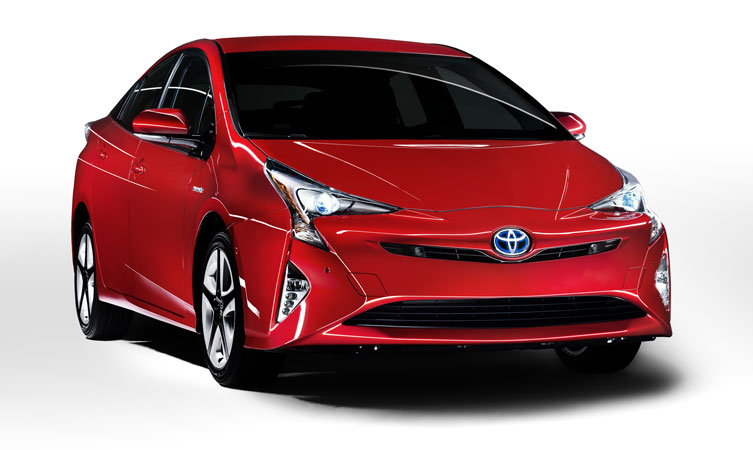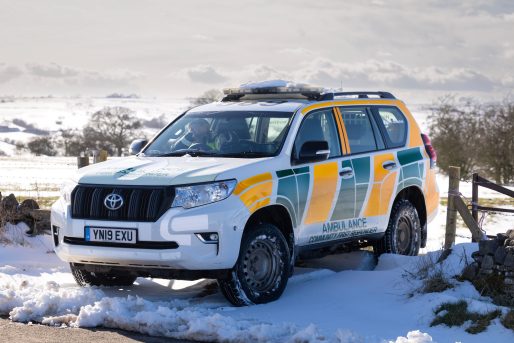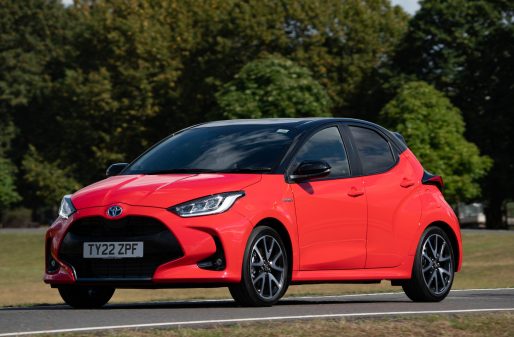Successive versions of the Toyota Prius have made significant advances in emissions performance and fuel economy, but none more so than the all-new fourth generation model. Carbon dioxide emissions are set to reach a new low of just 70g/km, with average fuel economy from 94.1mpg (depending on market and subject to final homologation).
These figures mark the greatest improvement yet from one model generation to the next since the introduction of the original Prius in 1997. At the same time, true to Toyota’s commitment to building ever better cars, new Prius benefits from greatly enhanced dynamic qualities in terms of handling, responsiveness and driver involvement.
Advances in efficiency
Using less fuel and reducing exhaust emissions have always been central to the concept of the Toyota Prius. With the all-new model Toyota has undertaken comprehensive re-engineering of its hybrid system and produced a ground-breaking aerodynamic design to take its signature efficiency to new heights.
As a result, CO2 emissions for the new model are from 70g/km, with average fuel consumption from 94.1mpg. This compares to the 89g/km and 72.4mpg achieved by its predecessor.
Changes to the hybrid powertrain are central to this achievement, including development of the 1.8-litre VVT-i Atkinson cycle petrol engine to produce a world-best 40 per cent thermal efficiency. The detailed changes to the unit have reduced friction and mechanical losses, so a greater amount of energy can be obtained from every drop of fuel.
Elsewhere in the system all the major components have been redesigned or revised to save weight and improve efficiency, including the transaxle, electric motor and power control unit.
Prius uses a new nickel-metal hydride (NiMH) battery that is more compact, yet more energy-dense, giving better performance and easier packaging – it is now located entirely beneath the rear seat, avoiding any compromise in trunk space.
The new Prius’s aerodynamics also makes an important contribution. The car’s lower, sleeker styling is sharper and more eye-catching, but at the same time more aerodynamically efficient. Toyota has succeeded in further improving the coefficient of drag (Cd) from 0.25 on the current model to 0.24. Both the bodywork and the under-floor area benefit from detailed elements that help smooth the flow of air over, under and away from the vehicle, reducing fuel consumption.
Better real-world performance
The new Prius accelerates from nought to 62mph in 10.6 seconds. Highway overtaking acceleration from 50 to 75mph (80 to 120km/h) can be accomplished in just 8.3 seconds and the top speed is 112mph. The new hybrid system’s output is 120bhp (90kW), and the drivetrain now delivers its power in a more user-friendly manner. The new PCU (Power Control Unit) allows the system to draw more on its electric power, which means that acceleration feels more natural with the engine revs building up gradually as the car gathers speed.
Day to day usability also improves significantly. This fourth generation Prius is the first that is able to pull a trailer, thanks to its 725 kg towing capacity (unbraked).
Improved vehicle dynamics
The focus on better efficiency has been matched by Toyota’s commitment to achieving better dynamic performance, making new Prius a more rewarding car to drive. Central to this mission is its use of the first TNGA (Toyota New Global Architecture) -based platform, called the GA-C platform, which has allowed for a much (2.5 cm) lower vehicle centre of gravity – a fundamental element in securing better handling.
The benefit of this is supported by a much more rigid bodyshell – a 60 per cent improvement on the current model. This has been achieved using new welding and construction techniques and strategic use of strong but lightweight, high-tensile strength steel.
A new double wishbone rear suspension contributes to better handling and stability, together with increased comfort for passengers. It is tuned to harness the improved performance by reducing body roll and maintaining straight-line stability, so the car is equally adept at handling winding roads or highway cruising.
These qualities combine with improved feedback and responsiveness from the throttle, steering and brakes to significantly raise Prius’ dynamic performance and create a more fun-to-drive character.
2016 Toyota Prius mpg and other technical data
| ENGINE | |
| Type | 4-cylinder in-line, DOHC |
| Displacement (cc) | 1,797 |
| Max. output (bhp/kW @ rpm) | 97/72kW @ 5,200 |
| Max. torque (Nm @ rpm) | 142 @ 3,600 |
| ELECTRIC MOTOR | |
| Max. output (bhp/kW) | 72 /53 |
| Hybrid battery material | Nickel-metal hydride (NiMH) |
| HYBRID SYSTEM | |
| Combined system max. output (bhp/kW) | 120/90 |
| PERFORMANCE | |
| Acceleration 0 – 62mph | 10.6 sec |
| Acceleration c50 – 75mph (80 – 120 km/h) | 8.3 sec |
| Max. speed (mph) | 112 |
| FUEL CONSUMPTION & EMISSIONS (subject to final homologation) | |
| Fuel consumption – combined cycle (mpg) | From 94.1 |
| CO2 emissions – combined cycle (g/km) | From 70 |
| DIMENSIONS | |
| Length (mm) | 4,540 |
| Width (mm) | 1,760 |
| Height (mm) | 1,470 |
| Wheelbase (mm) | 2,700 |
| Interior length (mm) | 2,110 |
| Interior width (mm) | 1,490 |
| Interior height (mm) | 1,195 |
| Towing capacity – unbraked (kg) | 725 |





Does the rear view camera shows dynamic helping lines which bend with the move of the steering wheel?
Hello Gerbre,
Thank you for your post. We have spoken with our product team for you and we believe that the 2016 Prius does not have dynamic reversing lines which bend with the movement of the steering wheel. At present we do not have a UK specification 2016 Prius for us to test this on. However if you wanted to test this for yourself we would recommend visiting your local Toyota dealer when the 2016 Prius has arrived.
Many thanks.
Dynamic Reversing Lines would have been nice but how’s about a Basic set of Reversng Lines on the new Prius? Even on the present version there are no lines whatsoever – I’ve never understood this when even the smaller Yaris has them!
PS. How’s about a “spare wheel” for the new Prius? Does the new model have one? I hope so – I’ve been unlucky enough to have 2 punctures on my “12-Reg” and unfortunately on the side-wall rendering the “gunge-solution” useless. Though the AA couldn’t have been more helpful. Though I dread what would have happened in the middle of nowhere with no phone signal!
Hello David,
Thank you for your post. 2016 Prius reversing camera comes with grid lines when reversing. Active and Business Edition grades both come with a temporary spare Tyre and Business Edition+ and Excel grades come with Tyre repair kits. Hope this helps clarify and if you have any other questions please let us know.
Thank you, I know the US modell has static lines, however in Europe this was different in the past. As you said, I will see when the car arrives.
I collect my new Prius soon and am unhappy that a temp spare wheel is not available for cars with 17” wheels. Repair kits are often useless and using them then means that a new tyre has to be purchased. Why are no temp 17” wheels available?
[1] My New Prius Business Edition+ has Reversing Lines that DO BEND with the steering wheel ! Nice one !
[2] After an unfortunate incident with my previous Prius using the supplied ‘gunk’ I decided to go for a new Prius with 15″ wheels though I would have preferred the nicer looking 17″ wheels. I would also have liked an Excel version but I was told at the time of ordering this wasn’t an option; subsequently this proved to be erroneous : shame !
Hi Mick. Thanks for getting in touch, and congratulations on the new Prius. Unfortunately, due to space constraints we could not offer a spare wheel on models with 17″ tyres. A space saver spare wheel is available as standard on 15″ tyre models, however. We appreciate your feedback Mick, and will pass it on to our product team for future reference.
Hi there,
I have recently imported a Prius S hybrid ,2016 from Japan to the UK.I am frantically trying to get hold of this car’s CO2 emission data when it was first registered ( in Japan). I need this information to submit to DVLA with the application to register the car in the UK.
The main Toyota dealer in the UK were of no help because the car is not on their database,and it’s been extremely difficult to get any contact information for Toyota main dealers based in Japan.Every contact email address that I got hold of turned out to be problematic.
Your assistance in directing me on where I can get the information will be appreciated.I have the export certificate but this has limited information of the car.
Hi Tariq,
Please provide the vehicle registration so we can look into this for you.
Thanks.